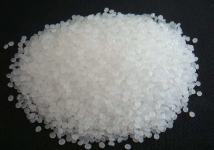read: 850 time:2025-03-12 09:54:35 from:化易天下
Acetone is a simple and widely used organic solvent in the chemical industry. Known for its effectiveness in various applications, acetone's structure plays a fundamental role in its chemical properties and functionality. In this article, we will break down the molecular composition of acetone, explore its structural features, and explain why this structure is essential for its industrial applications. So, let's dive in and explore what is acetone structure in detail.
Acetone, chemically represented as ( C3H6O ), is one of the simplest ketones. Its molecular formula indicates that it is composed of three carbon atoms, six hydrogen atoms, and one oxygen atom. The unique arrangement of these atoms gives acetone its distinct properties. When discussing "what is acetone structure," it's important to note that the formula itself does not reveal the full picture of how these atoms are connected.
The structural formula of acetone can be represented as:
CH₃-CO-CH₃
In this structure, the central carbon atom is double-bonded to an oxygen atom (C=O), forming a carbonyl group. The two remaining carbon atoms are single-bonded to the central carbon atom, and each is bonded to three hydrogen atoms, forming methyl groups (CH₃).
The carbonyl group (C=O) is what defines acetone as a ketone. This group is highly polar due to the difference in electronegativity between carbon and oxygen. Therefore, the polarity of the carbonyl group contributes to acetone's effectiveness as a solvent for both polar and non-polar substances.
The geometry of the acetone molecule is trigonal planar around the central carbon atom. This means that the bond angles between the atoms connected to the central carbon are approximately 120°. This configuration minimizes electron repulsion and stabilizes the molecule's structure. Understanding the spatial arrangement of atoms is crucial when answering the question, "what is acetone structure?" as it helps explain why acetone behaves the way it does in various chemical reactions.
Acetone's structure plays a key role in its solubility characteristics. The molecule has a polar and non-polar part due to its methyl groups and the carbonyl group. This duality makes acetone an excellent solvent for dissolving both polar and non-polar substances, a reason why it is widely used in industries ranging from pharmaceuticals to cosmetics.
The unique structure of acetone is vital for its industrial utility. Its small molecular size and ability to dissolve a wide range of chemicals are directly related to its molecular structure. Whether it is being used as a solvent in the manufacturing of plastics, as a cleaning agent in laboratories, or in the production of synthetic fibers, understanding "what is acetone structure" provides insight into its versatility and functionality.
In summary, when addressing "what is acetone structure," it is important to highlight that acetone is a simple yet highly effective ketone with a trigonal planar structure around its central carbon atom. The carbonyl group, combined with the methyl groups, contributes to its unique solvent properties, making it indispensable across numerous industries. Understanding the structure of acetone allows us to appreciate its wide array of applications and its role in the chemical world.
Prev: what is acetone made of
Next: what is acetone test

Jincheng Petrochemical's 300000 ton polypropylene plant successfully trial production, 2024 polypropylene market analysis

The ABS market remains sluggish, what is the future direction?

Market differentiation of bisphenol A intensifies: prices rise in East China, while prices generally decline in other regions

The production method and process flow of silicone acrylic lotion, and what are the common raw materials